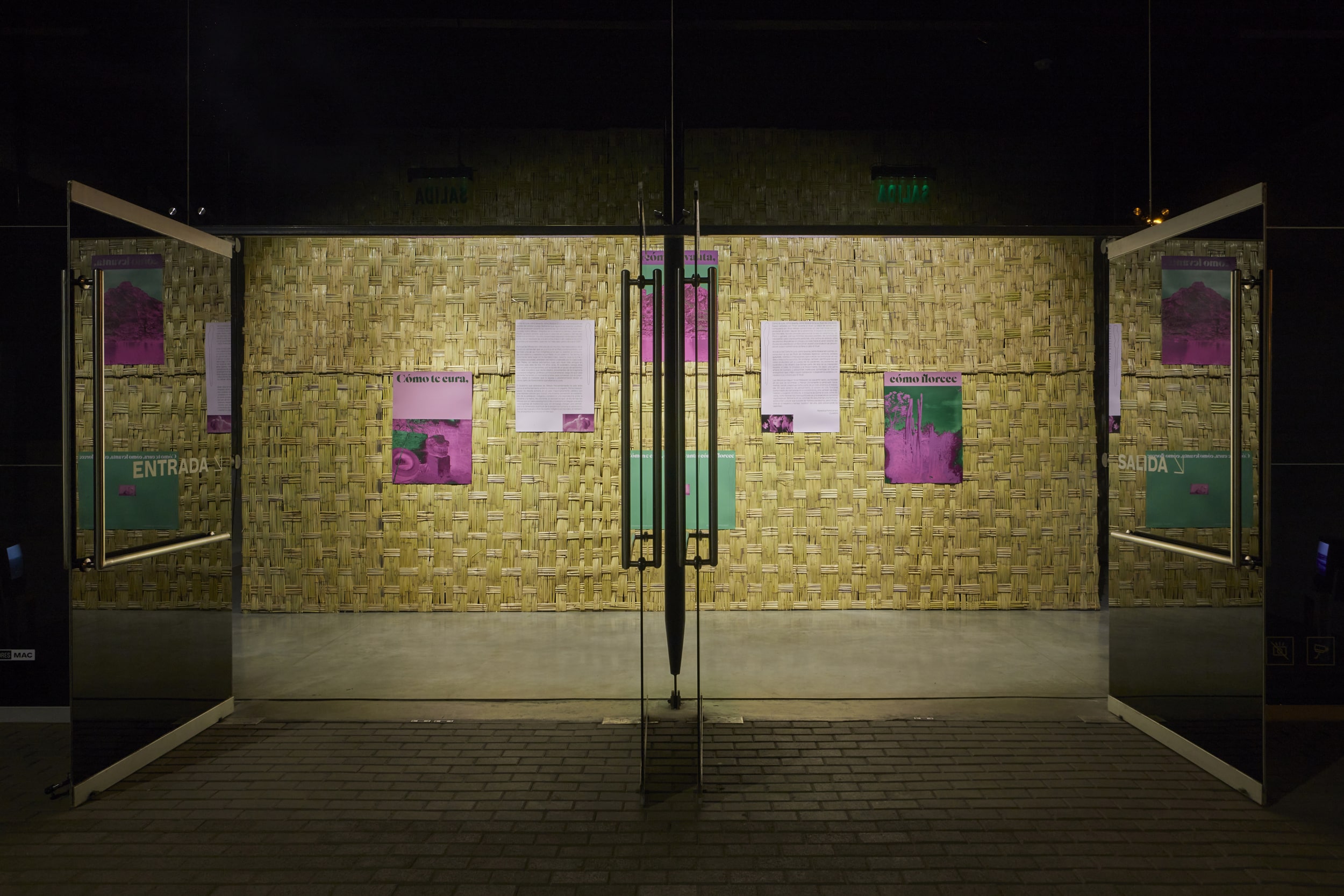19.10.2021
September 30, 2021-February 27, 2022

Cómo te cura, cómo levanta, cómo florece [How it heals you, how it lifts you, how it blooms] (2021) is a sound installation by artist Louidgi Beltrame that records the audible events that occur during collective healing ceremonies–known as Mesas– led by the curandero [1] [healer] José Levis Picón. The sound piece–that seeks to transpose the space and time of the ritual session into the exhibition–was specially developed for MAC Lima and results from a close collaborative relationship between the artist and the healer since 2015.
Although the Mesas are just one of the many manifestations of vernacular medicine practised in contemporary Peru, they are also one of the most stigmatised for their relation to the ingestion of psychedelics and expanded states of consciousness. The ceremony takes place clandestinely, throughout the night and in complete darkness, around the trance produced by the ingestion of San Pedro, a psychoactive cactus whose oldest ritual use in our country dates back three thousand years. The healer navigates this trance with his patients, the aid of a group of assistants and a syncretic altar that brings together objects from Christian and indigenous imagery. The Mesa culminates at dawn after each patient has had a moment alone to talk with the healer about the ailment that afflicts them, and they then receive a final flower bath that strengthens their cure. The dualism that runs through the Mesas has often been understood as a confrontation between Christianism and Paganism. Such an interpretation is not uncommon in a predominantly Catholic country with a colonial history that included a violent conversion to Christianity of the indigenous population and in which idolatry has been equated to the native. However, the reality is that–to
this day–the Mesas are a paradigmatic case of syncretism and integrate a heterogeneous series of traditions that nevertheless give centrality to the spiritual dimension of human existence: Catholicism, faith in huacas and other ancestral indigenous deities, herbalism, spiritualism and even new age beliefs.
Cómo te cura, cómo levanta, cómo florece takes its title from one of the phrases sung by Picón during the ritual. The sound piece is composed of twelve Mesas compressed into almost three hours that reproduce the regular order of the ceremony. On the other hand, the exhibition room has been designed to evoke Picón’s ceremonial space and generate the necessary conditions for deep listening with the minimum possible resources: a waved reeds curtain, plastic chairs arranged in a circle and the view towards the outdoors museum’s garden darkened by an UV filter alluding to the obscurity in which the ritual is customarily carried out. Throughout Cómo te cura, cómo levanta, cómo florece, listeners will recognise Picón’s voice in multiple registers: chants, guttural sounds, whistles and invocations that are sometimes pronounced aloud and sometimes as whispers. However, they will also identify the sounds produced by the patients’ bodies, the healer’s assistants and the objects that form part of the altar in their interaction during the dance, the cleansing and the flowering. In other words, a wide range of bodies and material presences become energetic forces that together transpose the ecstatic and synaesthetic experience provoked by the ritual.
The Mesas pursue the patient’s reintegration into a reality where the physical, mental, social and spiritual dimensions are fully recognised and honoured as part of a dynamic and indivisible whole. In this system of thought, sound functions as a means of communication and knowledge, diagnosis and healing. Thus, listening to Cómo te cura, cómo levanta, cómo florece, makes us participants in a healing experience recorded by Beltrame in his desire to document a form of cultural production that takes place clandestinely, introducing it into the “public” space and time of art, but preserving its opacity.
Florencia Portocarrero
In Latin America, the United States and Southern Europe, the term curandero refers to traditional native healers.
Comments
There are no coments available.